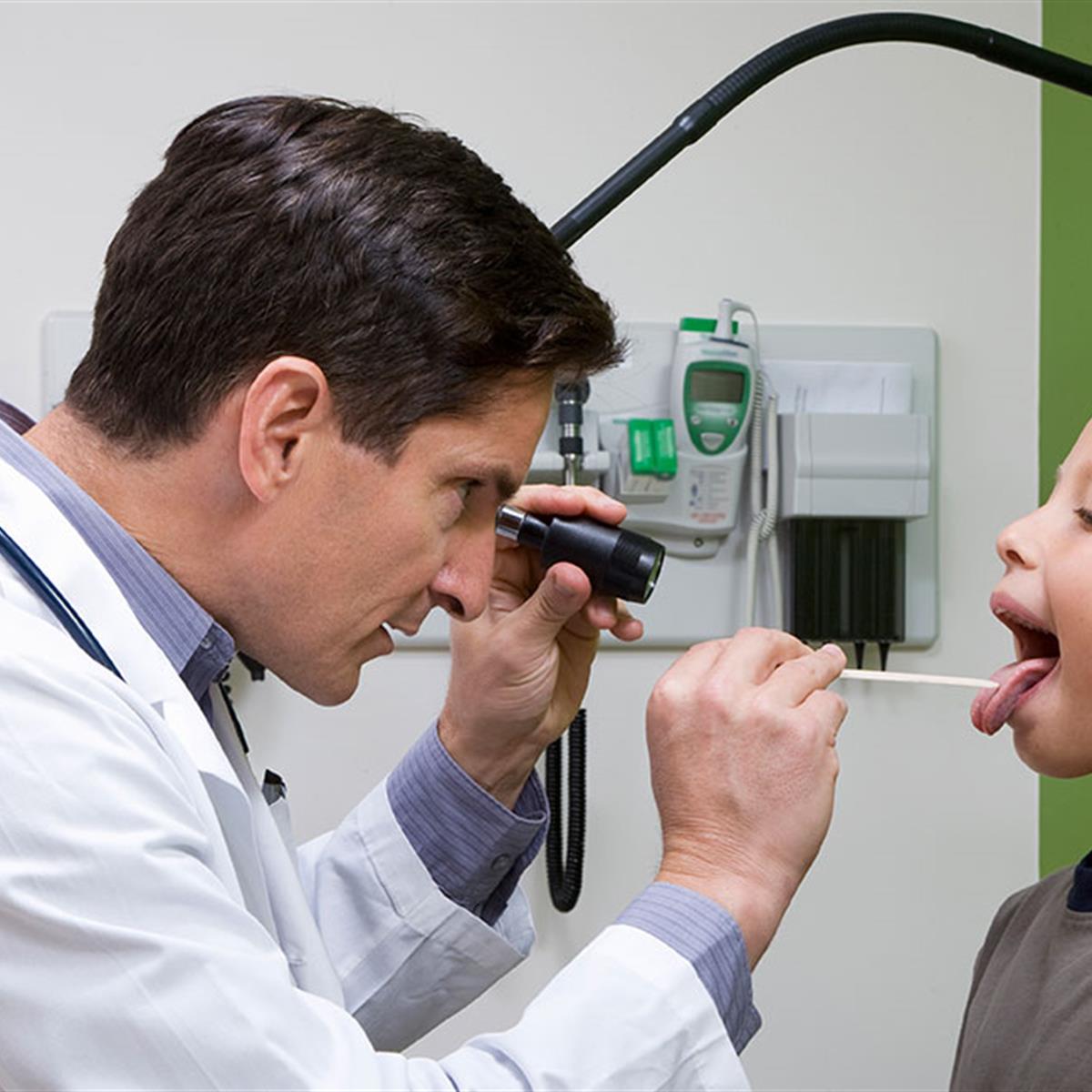Understanding Tonsillitis in Children: Causes, Symptoms, and Treatment
Tonsillitis is a common childhood ailment that can cause discomfort and concern for both parents and children. These small masses of tissue, known as tonsils, are located at the back of the throat and serve as a part of the body’s immune system, helping to filter out harmful bacteria and viruses. However, when they become infected or inflamed, it can lead to tonsillitis. In this comprehensive guide, we’ll explore what tonsillitis is, its causes, symptoms, and treatment options to help parents navigate this condition and provide the best care for their children.
What Is Tonsillitis?
Tonsillitis is the inflammation of the tonsils, which are two oval-shaped tissue masses located at the back of the throat, one on each side. These glands are part of the lymphatic system, which plays a crucial role in the body’s immune response. Tonsils help trap and filter out harmful bacteria and viruses that enter the throat. When the tonsils become infected, they may swell, causing discomfort and a range of symptoms. Tonsillitis can be either acute or chronic:
- Acute Tonsillitis: This is the most common form and is often caused by viral or bacterial infections. Acute tonsillitis comes on suddenly and typically resolves within a few days to a couple of weeks.
- Chronic Tonsillitis: When tonsillitis persists or recurs frequently, it is referred to as chronic tonsillitis. This condition may require more extensive treatment.
Causes of Tonsillitis in Children
Tonsillitis in children is most commonly caused by viral or bacterial infections. The following are some of the primary culprits:
- Viral Infections: Viruses such as the common cold, influenza (flu), and the Epstein-Barr virus (which causes infectious mononucleosis) are frequent causes of viral tonsillitis.
- Bacterial Infections: The most common bacterial cause of tonsillitis is Streptococcus pyogenes, which leads to strep throat. This type of tonsillitis can be more severe and may require antibiotic treatment.
- Other Factors: Apart from infections, other factors can contribute to tonsillitis in children. These include allergies, exposure to irritants like cigarette smoke, and, in some cases, gastroesophageal reflux disease (GERD).

Signs and Symptoms
Recognizing the signs and symptoms of tonsillitis in children is crucial for early diagnosis and treatment. The most common symptoms of tonsillitis include:
- Sore Throat: Children with tonsillitis often complain of a sore throat, which may range from mild discomfort to severe pain.
- Difficulty Swallowing: Swallowing can become painful and challenging due to the inflamed tonsils.
- Fever: A high fever is common with tonsillitis, especially if it is caused by a bacterial infection.
- Swollen Tonsils: The tonsils may appear red, swollen, and have white or yellow patches or pus on their surface.
- Bad Breath: Foul-smelling breath can be a symptom of tonsillitis.
- Voice Changes: Some children may experience changes in their voice, such as sounding hoarse or muffled.
- Headache: Headaches often accompany tonsillitis due to the inflammation and discomfort in the throat.
- Neck and Jaw Tenderness: Swollen lymph nodes in the neck and jaw area can be tender to the touch.
- Fatigue: Tonsillitis can leave children feeling tired and lethargic.

Diagnosing Tonsillitis
If you suspect your child has tonsillitis, it’s essential to consult a healthcare professional for a proper diagnosis. The doctor will typically perform a physical examination and may swab the throat to determine the cause of the infection, especially if they suspect strep throat. A throat culture can confirm the presence of bacteria like Streptococcus.
Treatment Options
The approach to treating tonsillitis in children depends on its cause and severity. Here are some common treatment options:
- Rest and Hydration: Encourage your child to get plenty of rest and drink fluids to stay hydrated. Rest is essential for the body to recover from an infection.
- Pain Relief: Over-the-counter pain relievers, such as acetaminophen or ibuprofen, can help alleviate pain and reduce fever. Make sure to follow the dosing instructions and consult a healthcare provider if you have any concerns.
- Antibiotics: If the tonsillitis is caused by a bacterial infection like strep throat, the doctor may prescribe antibiotics. It’s crucial to complete the full course of antibiotics even if your child’s symptoms improve.
- Warm Salt Gargles: Gargling with warm salt water can help soothe a sore throat and reduce discomfort.
- Cool Mist Humidifier: Using a cool mist humidifier in your child’s room can ease throat irritation and make breathing more comfortable, especially during sleep.
- Avoid Irritants: Keep your child away from irritants like cigarette smoke, which can worsen symptoms.
- Surgical Options: In cases of chronic or severe tonsillitis, or if the condition significantly affects your child’s breathing or swallowing, the doctor may recommend a tonsillectomy, which is the surgical removal of the tonsils.
Tonsillitis is a common childhood condition that can cause discomfort but is typically manageable with proper care and treatment. If your child displays symptoms of tonsillitis, consult a healthcare provider for a diagnosis and appropriate treatment. With the right care and support, your child can recover from tonsillitis and get back to their active, healthy self in no time.



